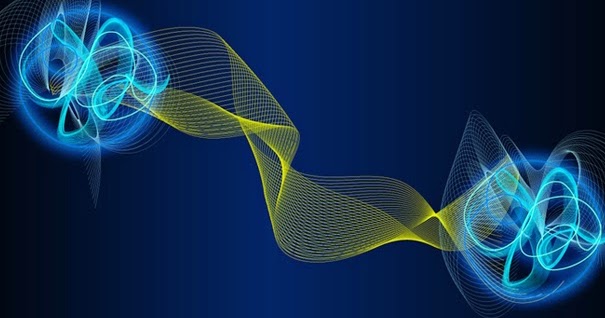
Quantum biology is the study of how quantum physics interacts with biology. It has its origins dating back to the 1920’s, when the Danish physicist Niels Bohr, delivered his influential lecture on his theory of atomic structure.
The use of quantum biology can help scientists explain certain phenomena within the plant and animal kingdoms.
Migratory birds
Migratory birds use of the earth’s magnetic fields to navigate. Scientific studies have found, if you cover one eye of a bird, you can ‘turn off’ the magnetic compass to the opposite side of the bird’s brain. This is accomplished because their eyes are affected by the protons entering the eyes and activating chemical reactions.
Imagine energy molecules having peaks and valleys, and the bird’s chemical compass delicately balanced at the peaks, slight changes in the Earth’s magnetic field can push the molecule into one of the valleys. This is where quantum entanglement plays a part in the bird’s ability to navigate.
Quantum entanglement refers to the states of two or more particles being interdependent, regardless of the distance separating them. It’s one of many counterintuitive features of the subatomic landscape, in which particles such as electrons and photons behave as both particles and waves simultaneously, occupy multiple positions and states at once, and traverse apparently impermeable barriers.
When a photon enters the bird’s eye, it creates a pair of entangled electrons. Each of the electrons have two possible states. Let’s refer to these states as ‘red’ and ‘green’. Like Schrödinger’s cat, until it is observed (measured), the electron is neither red nor green. The electron is both at the same time. If the entanglement is based upon the color of each electron being the same, the entangled electron will always be the same color as the first. The entanglement could also be that the second electron is always the opposite color of the first. Confusing, right? It is as if the first electron is dictating the outcome of the second. This is why Einstein called quantum physics ‘spooky’. This is ultimately the key to the bird’s ability to navigate. The direction of the Earth’s magnetic field can influence the outcome of the entangled electrons.
Near the equator, the combination of electrons may be the same color. The farther away from the equator, the colors may be more likely opposite from each other. The bird is able to detect the tiny variations in these color patterns to know where it is located in relation to its destination.
Sense of smell
Why do some things smell like something else? For instance, why does cyanide smell like bitter almonds? The prevailing theory (the lock and key mechanism), dating from the 1950’s, is that scent molecules fit certain receptors, thereby triggering a unique smell sensation. But the compound structures for almonds and cyanide are very different and obviously cannot fit into receptors correctly as the lock and key theory suggests, yet they both share a common smell. What’s going on?
Quantum biology proposes that scent molecules vibrate the bonds that hold chemical compounds together. The bonds of almonds and cyanide resonate at the same frequency. A study was conducted using fruit flies to determine the validity of this theory. In the study, the smell of orange blossoms was recreated with a different form of hydrogen atom (deuterium) that vibrated at a slower frequency than a regular hydrogen atom. If the vibrations are different, the smells should also be different. The fruit flies were trained to avoid the modified version of the orange blossom molecule. In a maze like test, the fruit flies had to choose either the true orange blossom molecule or the modified version. They always chose the true orange blossom molecule.
This is not to say that the lock and key theory is incorrect, but rather that it works in conjunction with the scent molecule vibration theory.
